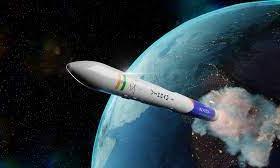
Skyroot Aerospace unveils Vikram-1 rocket, aims for satellite launch in early 2024
text_fieldsHyderabad: Skyroot Aerospace, a space start-up, has revealed its indigenously developed Vikram-1 rocket. It is expected to launch satellites into low Earth orbit early next year.
Jitendra Singh, India's Minister for Science and Technology, inaugurated 'The MAX-Q Campus,' Skyroot's new headquarters at the GMR Aerospace and Industrial Park in South Hyderabad.
The MAX-Q Campus is the largest private rocket development facility in India, encompassing an area of 60,000 square feet.
Vikram-1, an all-carbon-fibre-bodied multi-stage launch vehicle, has the capability to deploy payloads of around 300 kg into Low Earth Orbit. It is equipped to carry multiple satellites into orbit and features 3D-printed liquid engines.
The planned launch for Vikram-I in early 2024 follows the successful launch of the Vikram-S rocket on November 18th of the previous year.
The new Skyroot headquarters integrates design, manufacturing, and testing facilities for the development of space launch vehicles. It also provides workspaces for the company's 300 employees.
Pawan Chandana, co-founder and CEO of Skyroot Aerospace, emphasised the significance of the "Max-Q" point during a rocket's journey to space. He stated that the MAX-Q headquarters symbolises the company's unwavering commitment to pushing boundaries and achieving extraordinary feats to "Open Space For All."
Jitendra Singh praised Skyroot as a testament to India's immense talent and scientific prowess, highlighting the success of public-private partnerships in the country's space sector initiated by Prime Minister Narendra Modi.
Bharath Daka, Co-Founder and COO of Skyroot, expressed great pride in the simultaneous unveiling of the Vikram-1 space launch vehicle and the inauguration of the new headquarters. He noted the crucial role played by Skyroot's design expertise and homegrown technology in the creation of Vikram-1, emphasising their preparations for the early 2024 launch and future updates on the orbital mission.





